Exploring the history of Kolkata and Murshidabad
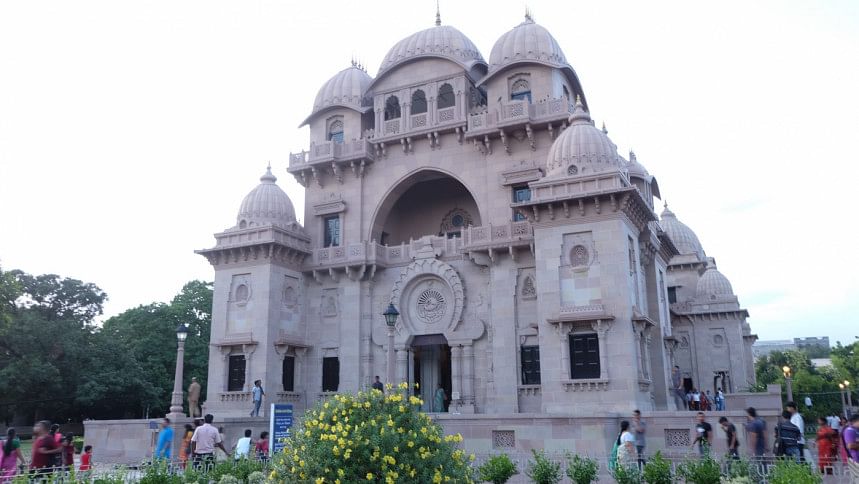
It was during one of our visits to Kolkata that we decided to explore the various temples and other places of interests. The very first morning, we drove for almost two hours to reach the Dakshineswar Kali Temple located on the eastern bank of the Hooghly River. The temple was built by Rani Rashmoni, a philanthropist and a devotee of Kali. The temple compound, apart from the nine-spired main temple, is beautifully designed and contains a large courtyard surrounding the temple, with rooms along the boundary walls. There are twelve shrines dedicated to Shiva — Kali's companion along the riverfront, a temple to Radha-Krishna and a bathing ghat on the river.
The temple is famous for its association with Ramakrishna, a mystic priest of the 19th century. His house attracted several monastic and householder disciples, including Narendranath Dutta, who later became Swami Vivekananda as one of the chief monastic disciples.
The Dhakeshawari Temple in Dhaka has been built on the architectural design of the Dakshineswar Kali Temple.
In the afternoon, visited the Kalighat Kali Temple dedicated to the Hindu goddess Kali. Kalighat was a landing site sacred to Kali on the Bhāgirathi River. The name Kolkata is said to have been derived from the word Kalighat. The temple was undergoing restoration and piles of garbage were dumped along the road leading to the temple. The narrow road was nevertheless vibrant with vendors selling flowers, sweets, fruits and all types of toys, including colourful clay toys.
Our next destination was the Birla Mandir in Ballygunge, built by the industrialist Birla family. It took 26 years to complete the entire structure. The main temple houses statues of deities Krishna and Radha.
We started the next day with a visit to the Missionaries of Charity, a Catholic religious congregation established in 1950 by Mother Teresa, now known as Saint Teresa of Calcutta. The Mother House of the Missionaries of Charity, located at A.J.C. Bose Road has been home to Mother Teresa and her sisters since then. It is here that Mother Teresa lived, prayed, worked, and guided her religious family of sisters spread across the world. Her tomb has become a place of pilgrimage and quiet meditation to people of all creeds.
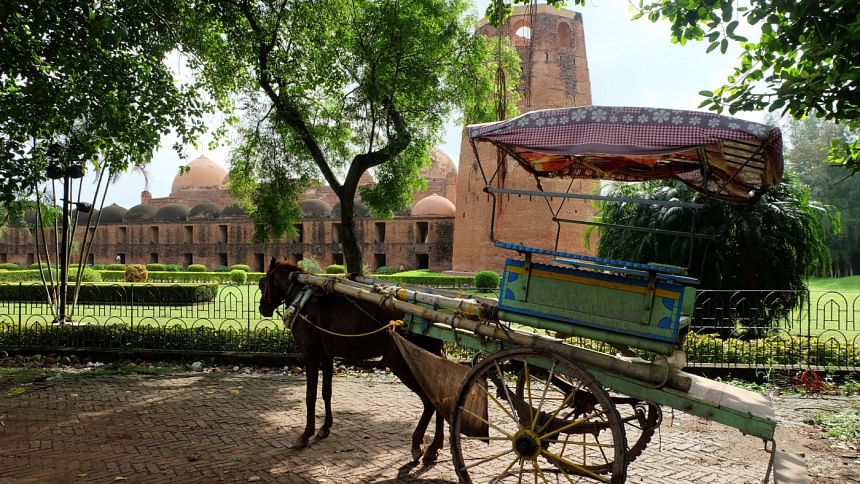
Our next destination was to offer prayer at the Nakhoda Masjid, the principal mosque of Kolkata in Chitpur. The mosque was built by Kutchi Memon Jamat, a small sunni community from Kutch. The mosque was named Nakhoda, meaning "Mariner" by a Kutchi shipping magnet. It was Jumma and naturally, the mosque was filled to the brim with hundreds of devotees spilling onto the main roads and alleys. The pavements were all occupied by the vendors and we had to squeeze ourselves to the mosque owing to the chaotic traffic by all modes of transport including horse carriage and rickshaws.
We have longed to visit Murshidabad, once the capital of Bengal and then the richest province of India. Having visited the Emperors, Sultans and Kings across the planet, it was always our desire to visit our Nawabs. With this intention in mind, we left for Murshidabad.
Murshidabad was the capital of Bengal during the Mughal period. In 1704, the Diwan of Bengal, Murshid Quli Khan, following Emperor Aurangzeb's orders transferred the capital there from Dacca (now Dhaka) and renamed the town Murshidabad. After the British conquered Bengal, Murshidabad remained the seat of administration for a while until 1790. It was the capital of the Bengal Subah in the Mughal Empire for seventy years, with a jurisdiction covering modern-day Bangladesh and the Indian states of West Bengal, Bihar and Orissa. Bengal was then the richest Mughal province. The city's decline began with the defeat of the last independent Nawab of Bengal Siraj-ud-Daulah at the Battle of Plassey in 1757.
It took us five hours by road to reach Murshidabad. Sprinkled along the highway were few small towns with one-two storied old dilapidated buildings and shops selling daily essentials. The road was in many places full of potholes.
Before reaching the city, we dropped at the site of the Battle of Plassey. We were totally disappointed at the poor maintenance of the park and adjoining areas. A concrete column mentioning the Battle of Plassey with the year of occurrence and a bust of Nawab Siraj-ud-Daulah is all that exists at the site of the battlefield amidst the mango garden. There has been no attempt to write a few words about the historical background of the site.
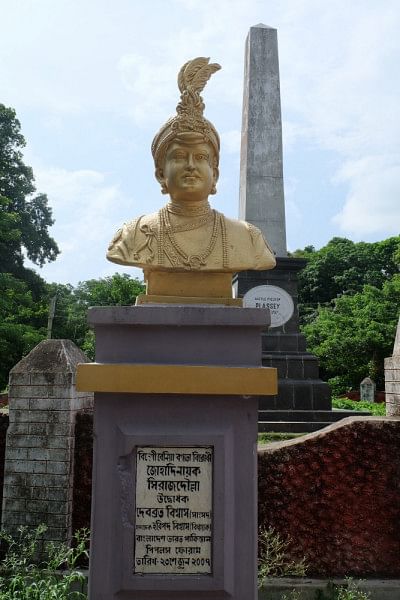
When we reached Plassey, pages began to unfold from the tragic, heart-rendering events. The conspiracy of the East India Company, bribery of Mir Jafar, retreat of Madan Lal from the battlefield, the treacherous role of Jagat Sheth and lastly, the heavy downpour that drenched the uncovered gunpowder all contributed to the defeat of the last independent Nawab of Bengal. After spending some time at the site of the battlefield, we drove through Murshidabad to the eastern end of the city. We crossed the Bhagarathi river in a ferry in about ten minutes. We then availed a three-wheeler and drove for another ten minutes before we reached Khoshbagh.
We were overcome with emotion as we approached Khoshbagh, the garden-cemetery of the Nawabs of Bengal, situated on the west bank of the Bhagirathi river. Khoshbagh is the resting place of Nawab Siraj-ud-Daulah, his wife Lutf-un-nisa, Nawab Alivardi Khan and their family members. The garden-cemetery is well-maintained with ornamental trees.
The following morning, we dashed to the Katra Masjid, a mosque of immense architectural beauty, meticulously restored in a well-maintained immaculate garden. It was built by Nawab Murshid Quli Khan, the first Nawab of Bengal. The tomb of Nawab Murshid Quli Khan lies under the stairs of the mosque. However, prayers are not allowed officially within the premises and we had to be content just by admiring the beautiful masjid.
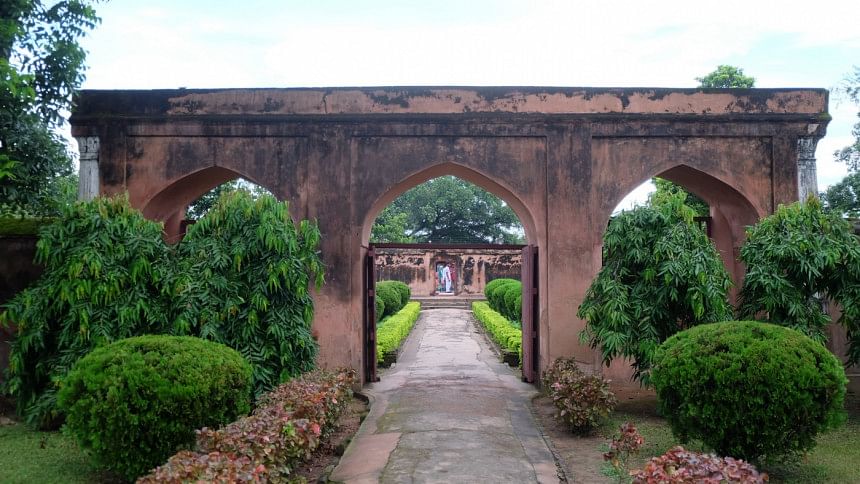
We then visited the Hazarduari Palace - The Palace with a thousand doors, the chief tourist attraction of Murshidabad. It has a thousand doors and hundred plus rooms. It is now a museum and has an exquisite collection of armours, splendid paintings, exhaustive portraits of the Nawabs, beautiful works of ivory from China and many other valuable works of art. Located opposite to the Hazarduari Palace is the Nizamat Imambara, the very impressive and perhaps the largest imambara in India.
Our last stop was at the Jafarganj Cemetery, built by Mir Jafar within an enclosure of waved walls, inside the campus of Namak Haram Deorhi. It hosts the graves of the later Nawabs of Bengals of the Najafi dynasty, including Mir Jafar, and their family members. Namak Haram Deorhi was the palace of Nawab Mir Jafar. It is located just opposite to the Jafarganj Cemetery in the Lalbagh area. Namak Haram Deorhi refers to both the place of Mir Jafar and the main gate which leads to the palace. This building was used as the residence of Mir Jafar, before he ascended the musnad of Bengal. The old, dilapidated gate is all remains today to remind us about the Namak Haram Mir Jafar.

 For all latest news, follow The Daily Star's Google News channel.
For all latest news, follow The Daily Star's Google News channel. 



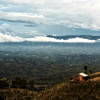



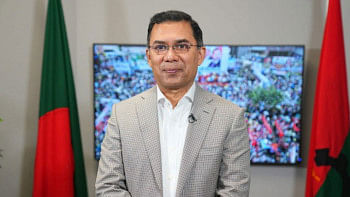
Comments